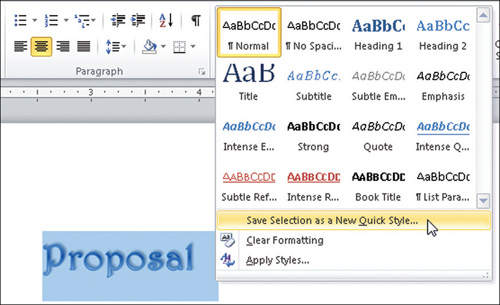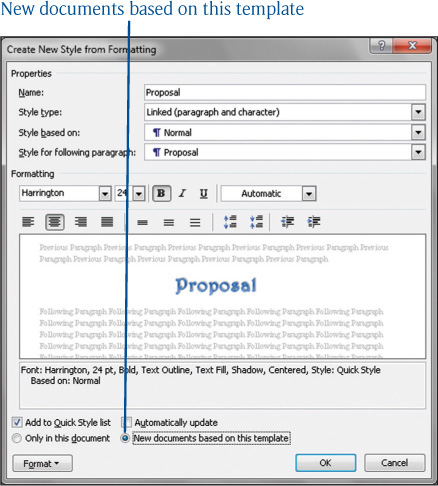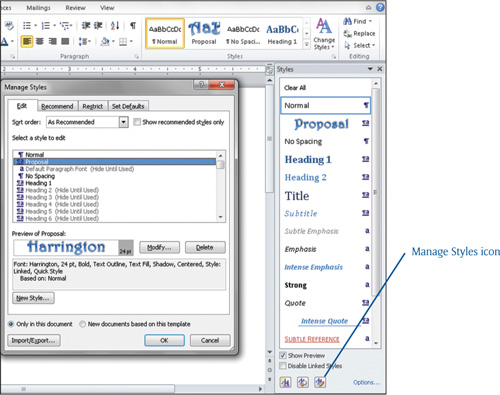Creating Customized Styles
If your company has a standard format it likes to use
for document areas, you can create your own Quick Style and quickly
apply it whenever you need it. For example, suppose your company likes
proposals to have a heading in a 24-point bold Harrington font with the
Gradient Fill – Blue, Accent 1 text effect and a shadow.
You can save all that formatting in a style and save
it for use in future documents. Follow these steps to save the
formatting to a Quick Style.
Format and select some text the way you want it.
Choose Home > Styles and click the More button.
Choose Save Selection as a New Quick Style, as shown in Figure 4. The Create New Style from Formatting dialog box appears.

Enter a name for your style, “Proposal,” for example.
Click Modify. The dialog box expands. See Figure 5.

Select New Documents Based on This Template.
Click OK. The new Quick Style appears in the Quick Style box. See Figure 6.

Managing Styles
Sometimes the styles you already have, whether
standard or custom styles, aren’t quite right for the current document.
For example, say the Heading 1 style is a 14-point bold Veranda font,
but for this document, you want it as an 18-point font.
You could select every occurrence of the Heading 1
style and change them individually to an 18-point size, or you can
modify the style. When you modify a style, you decide if you want it
changed for only the current document, or if you want to change it also
for future documents based on the same template.
Fortunately, Word has a Manage Styles box you can use for quick, efficient style management. Just follow these steps:
Display the Styles task pane by clicking the Home > Styles Dialog Box Launcher.
Along the bottom of the Styles task pane are three small icons, the third of which is the Manage Styles icon.
Click Manage Styles. The Manage Styles dialog box appears, as shown in Figure 7.

From the Manage Styles dialog box, select the style you want to modify.
Select whether the change you are planning should apply to the current document or to any new documents based on the template.
Click the Modify button and make changes to the style.
Click OK when you are finished.